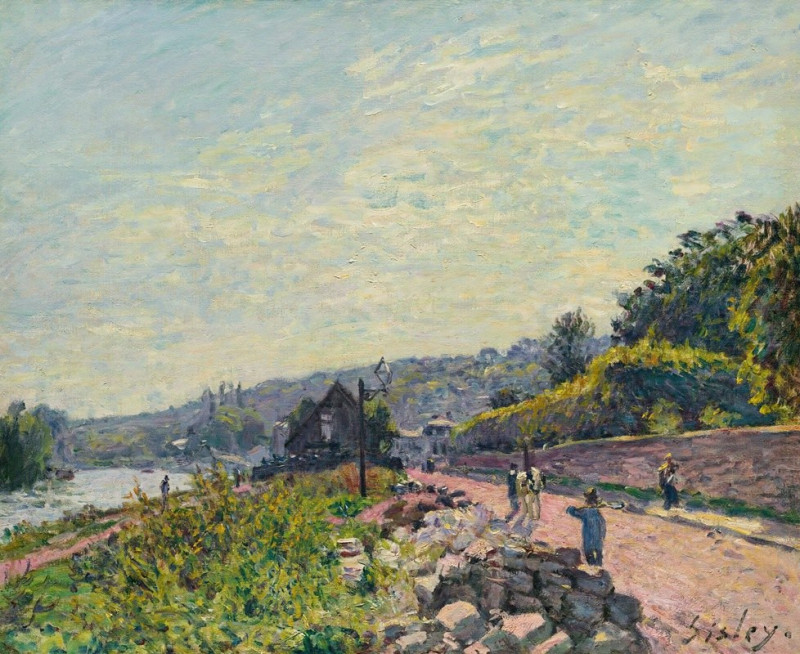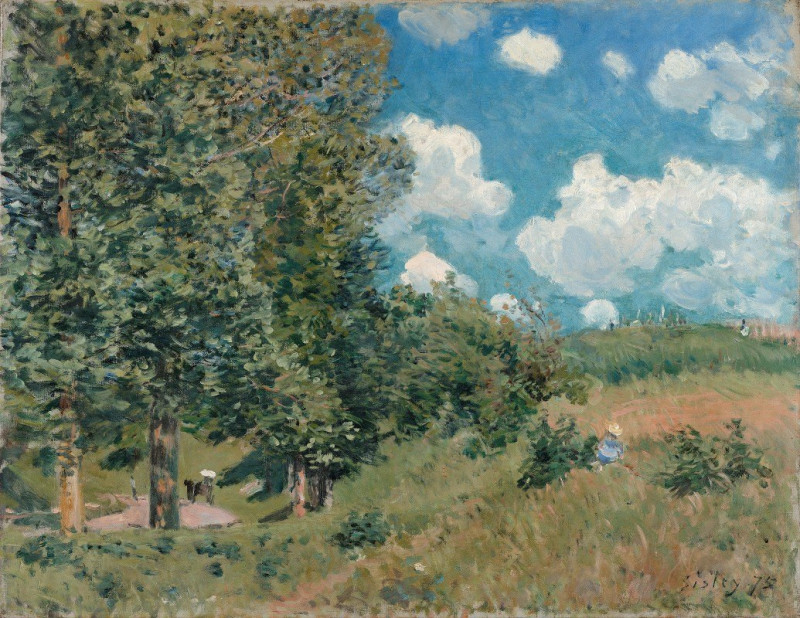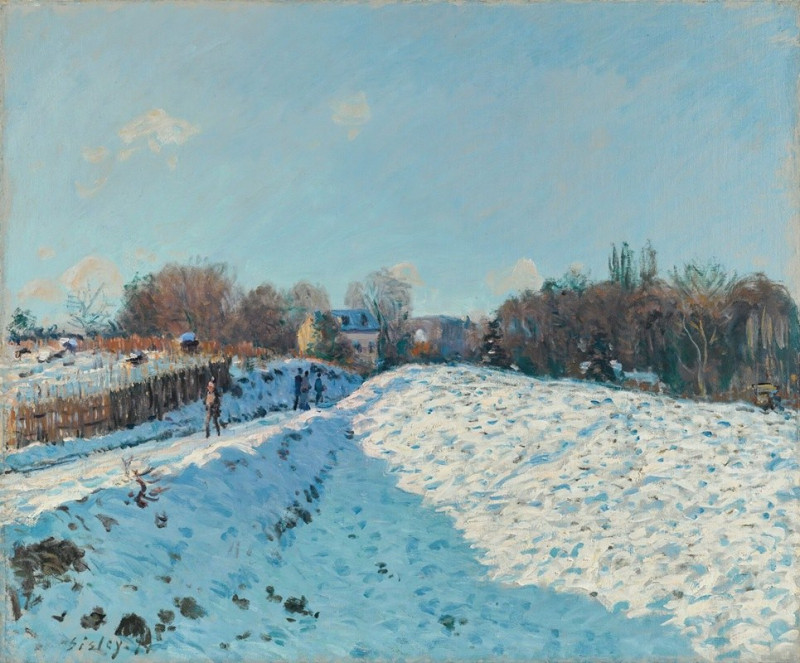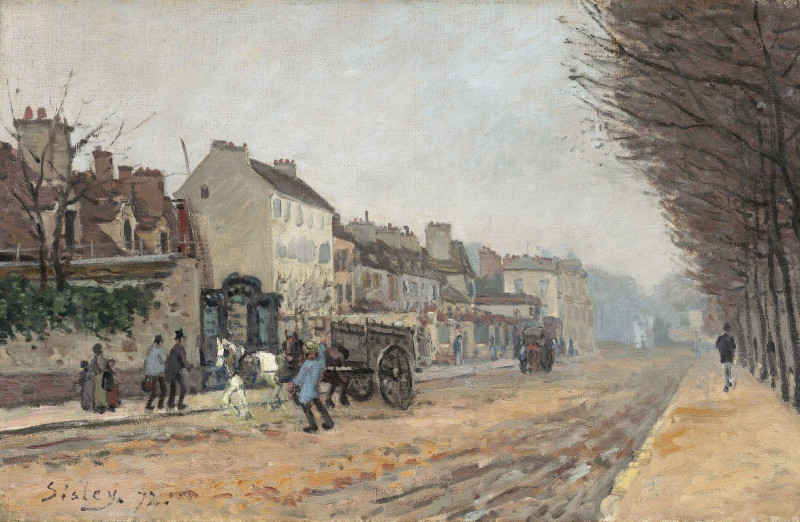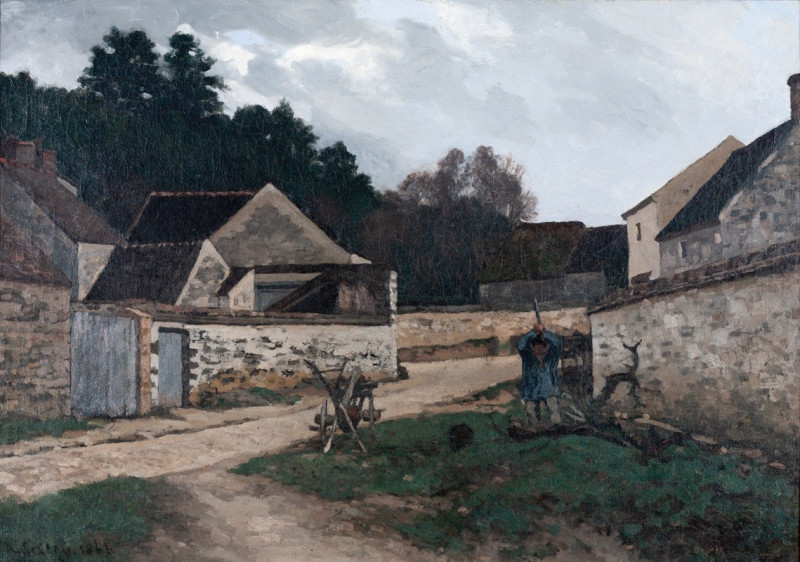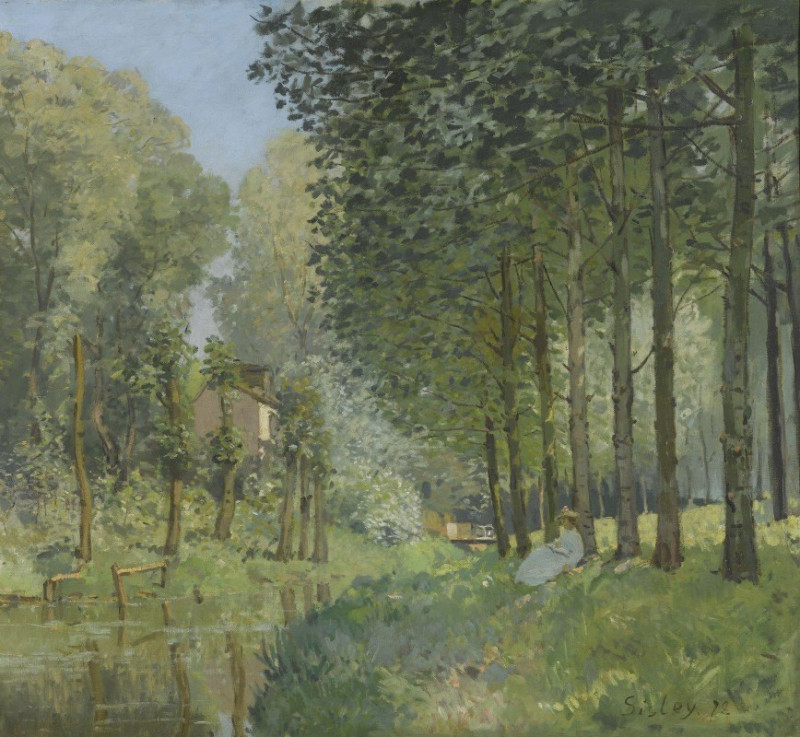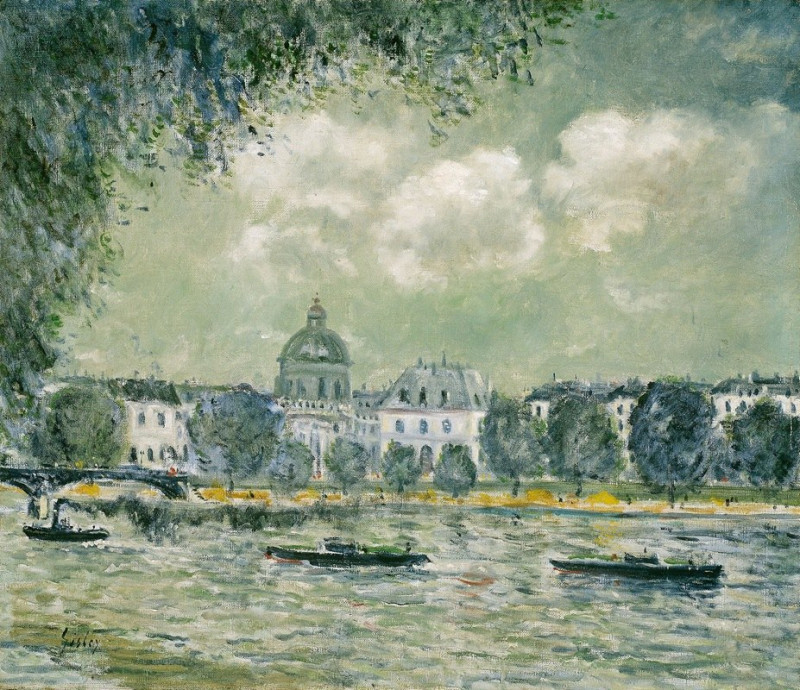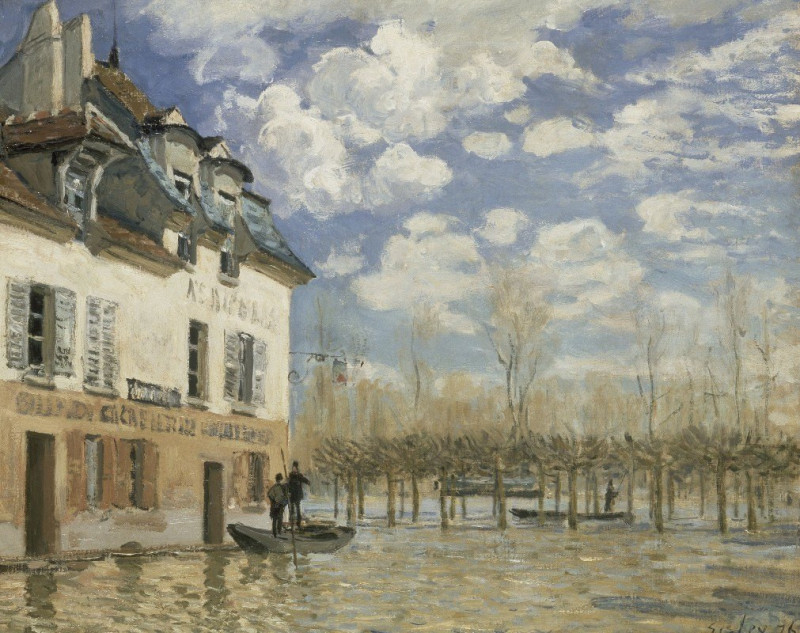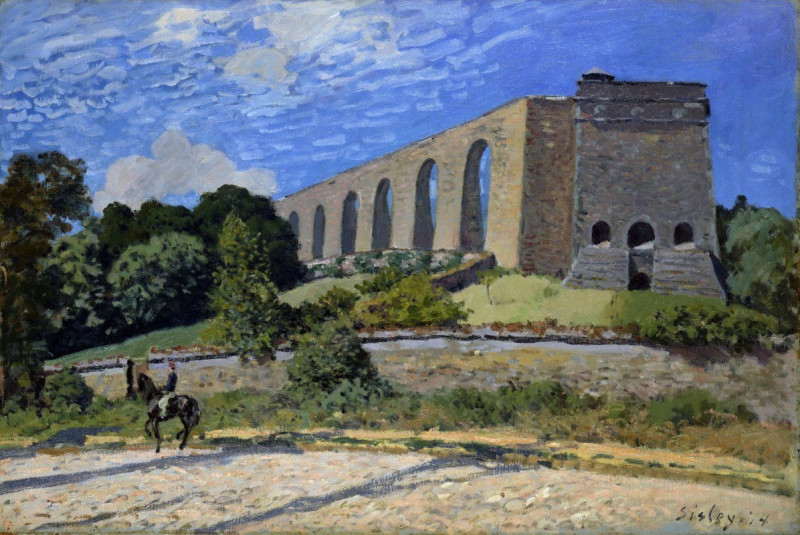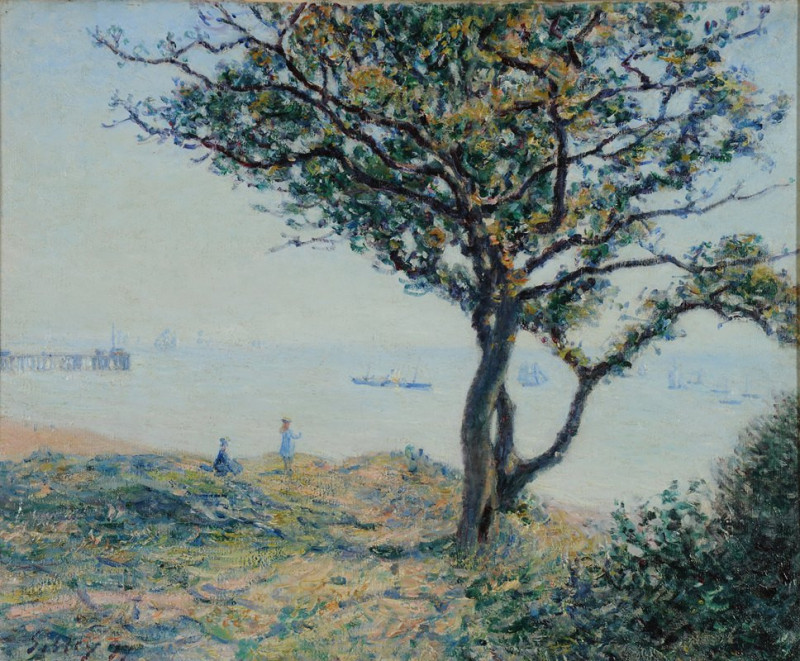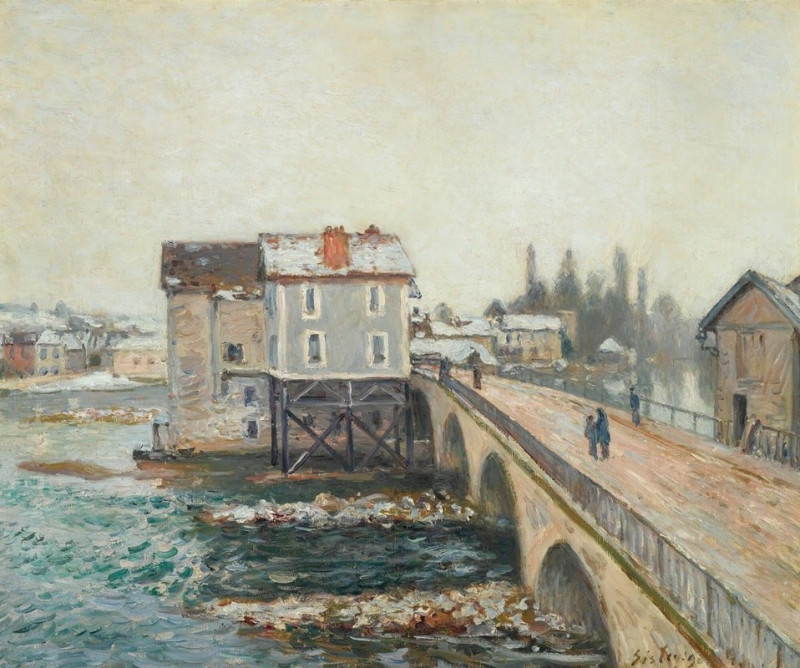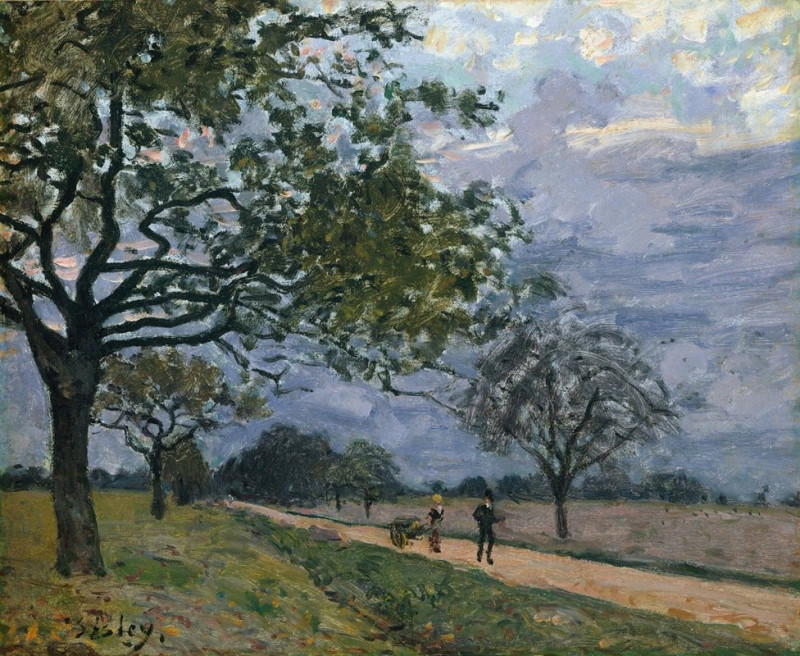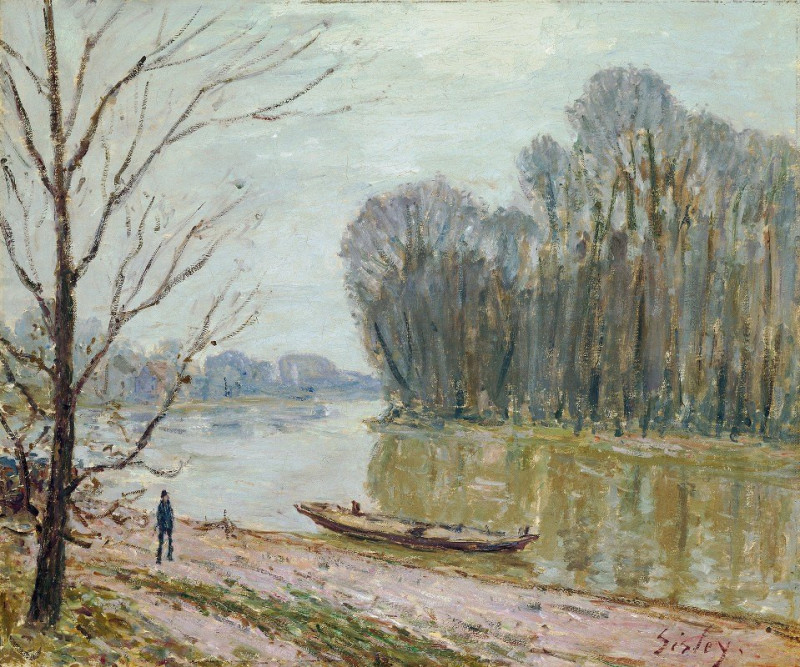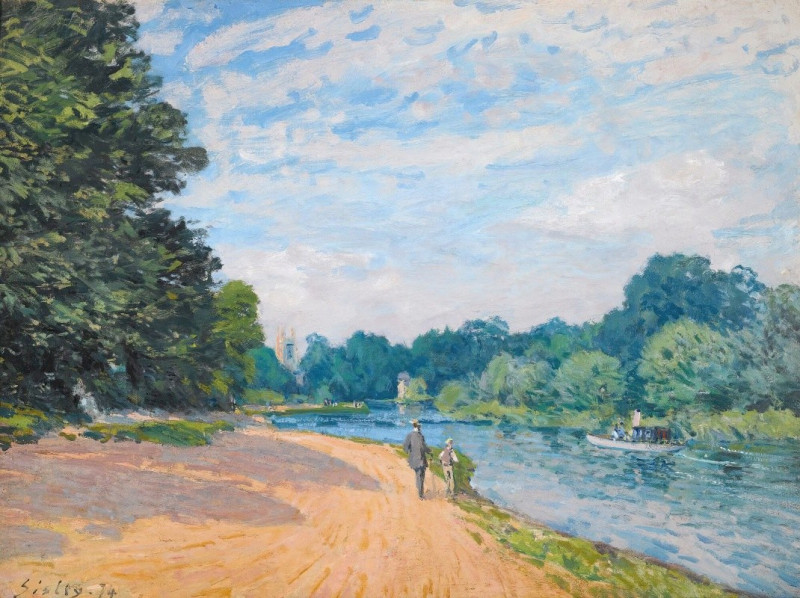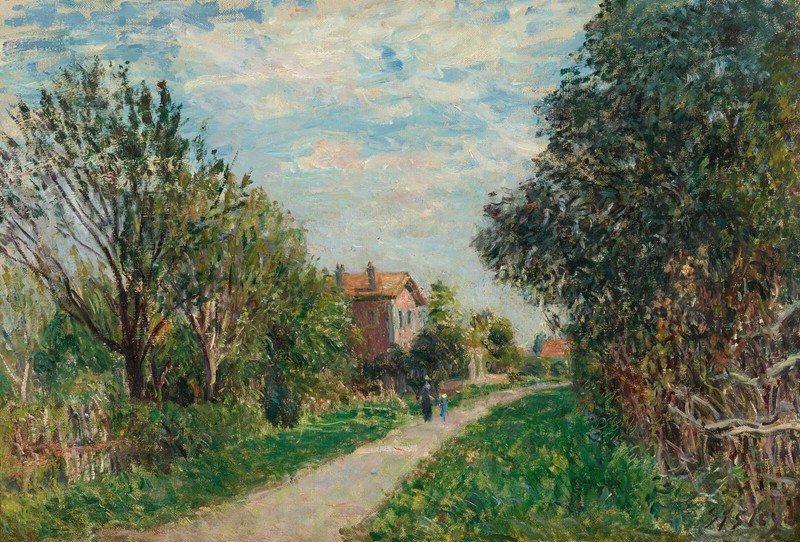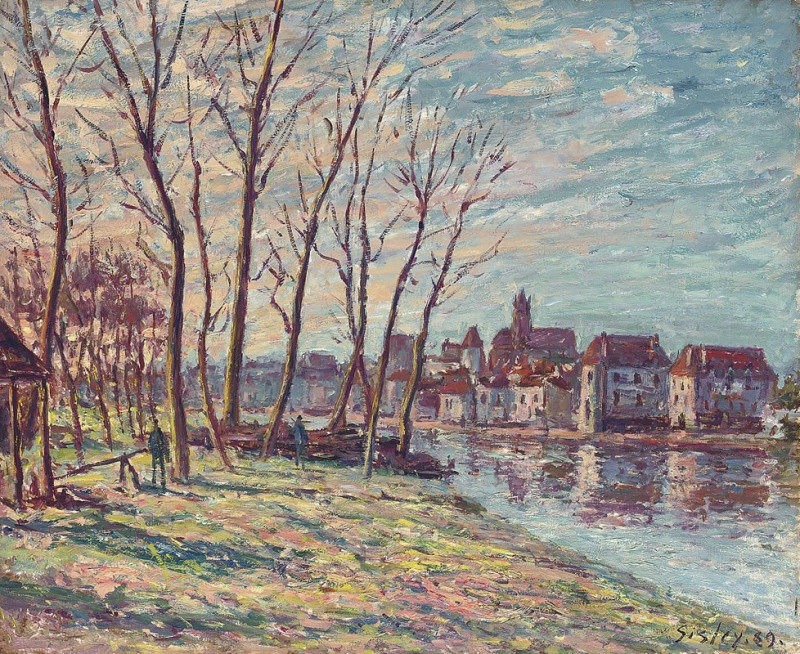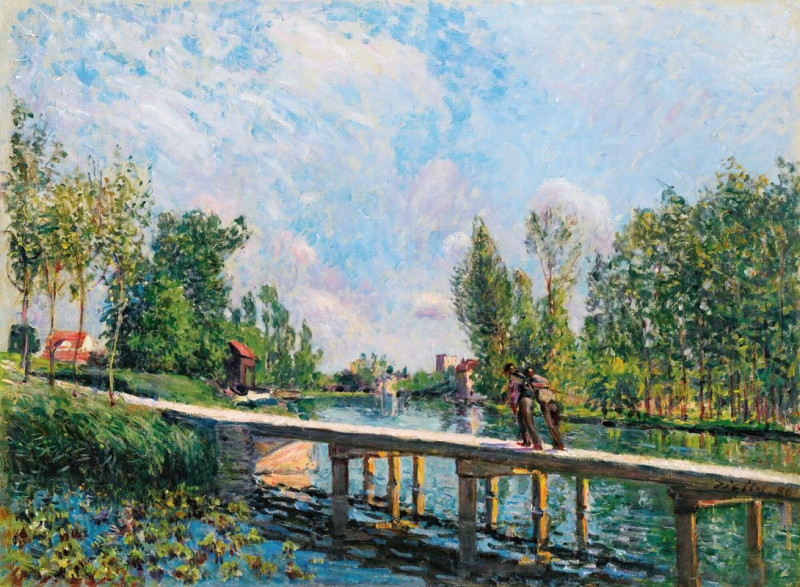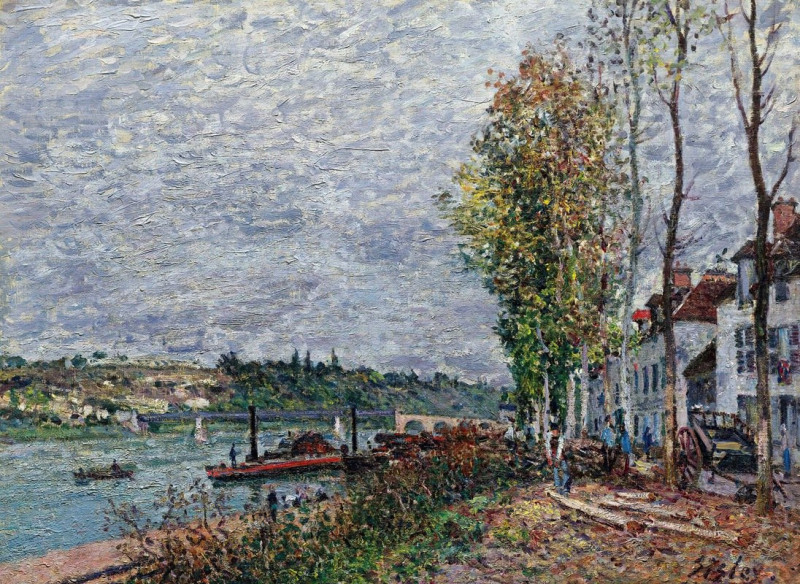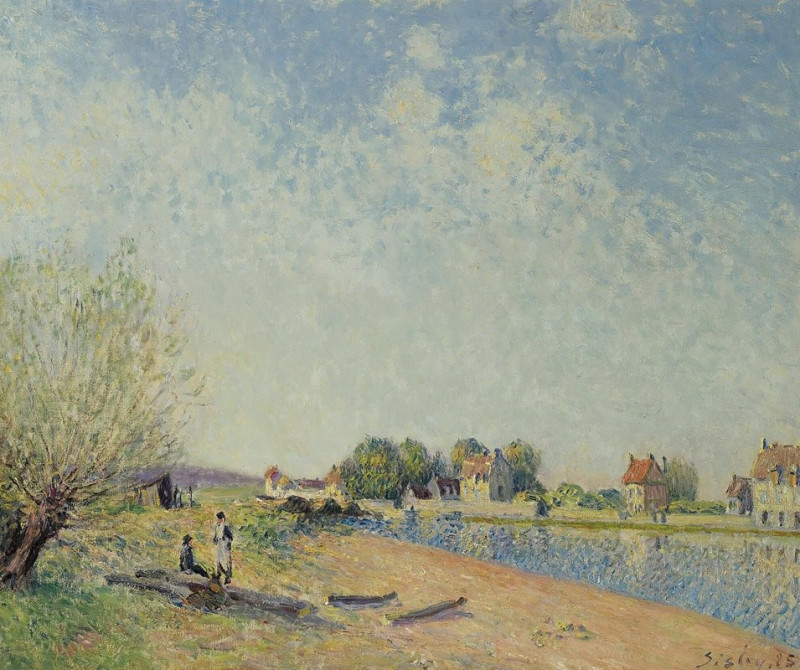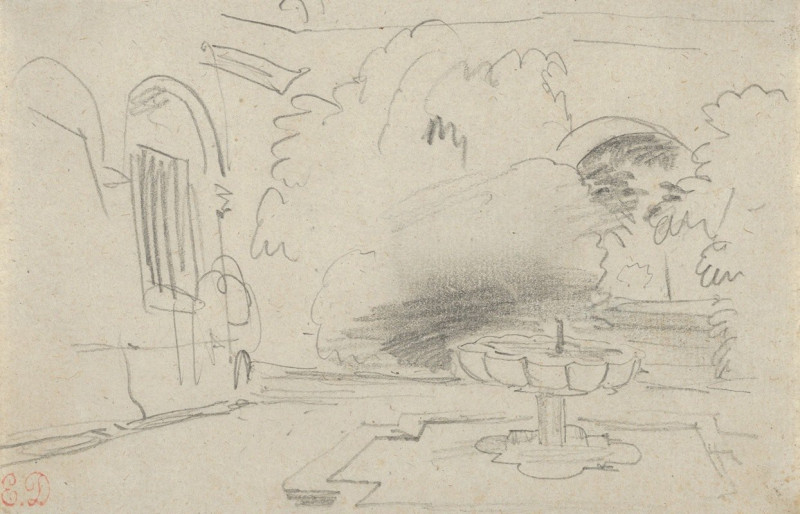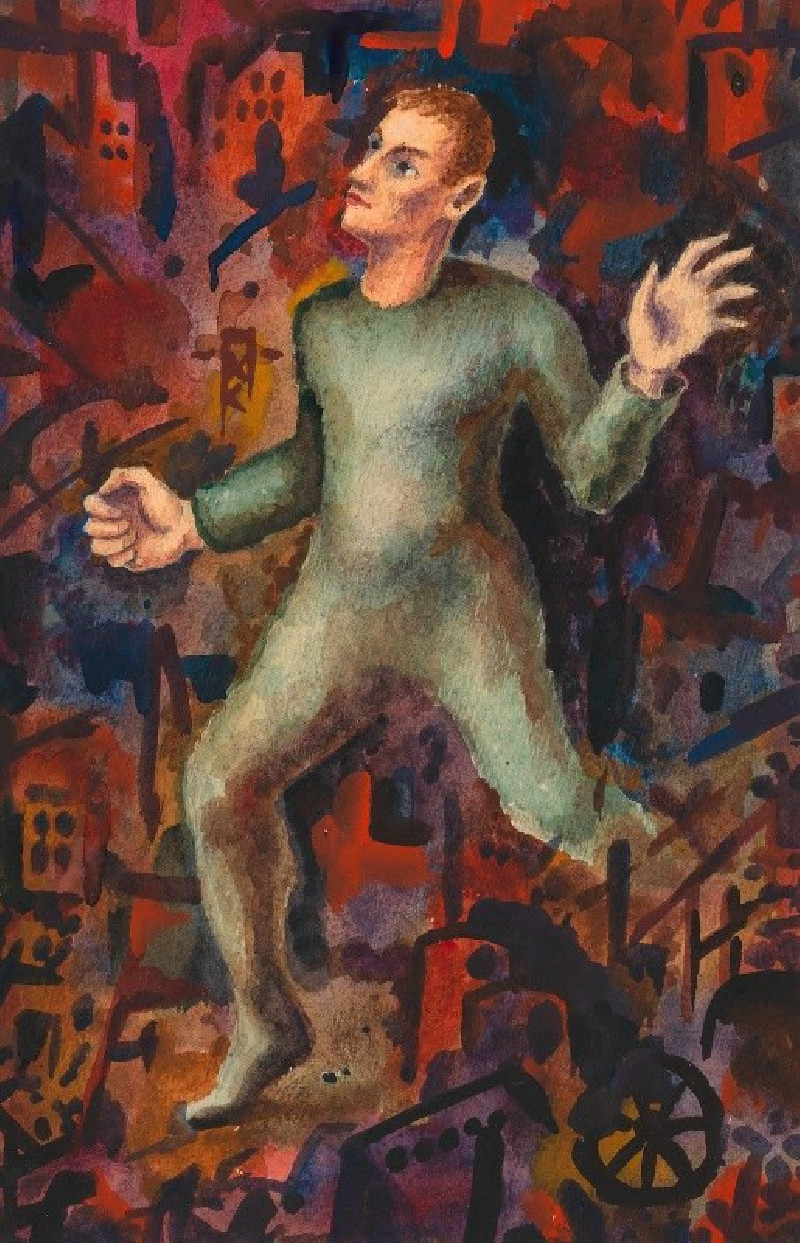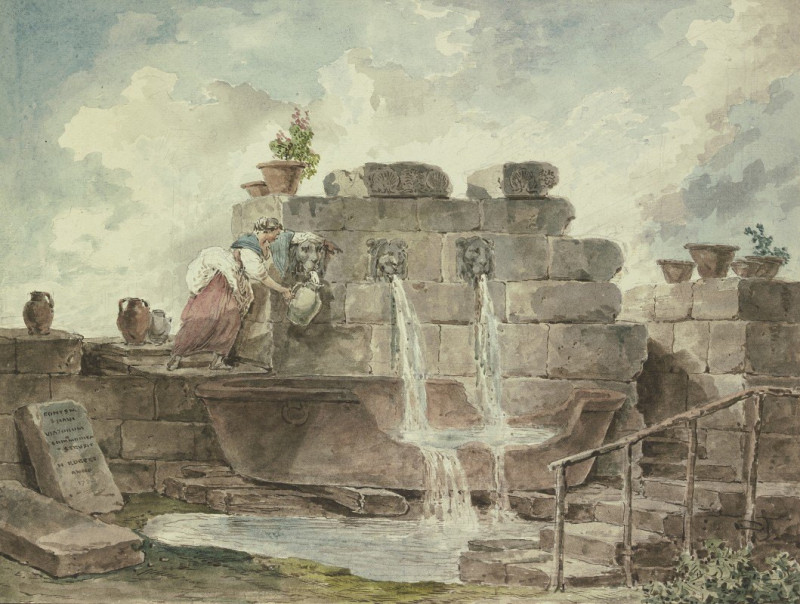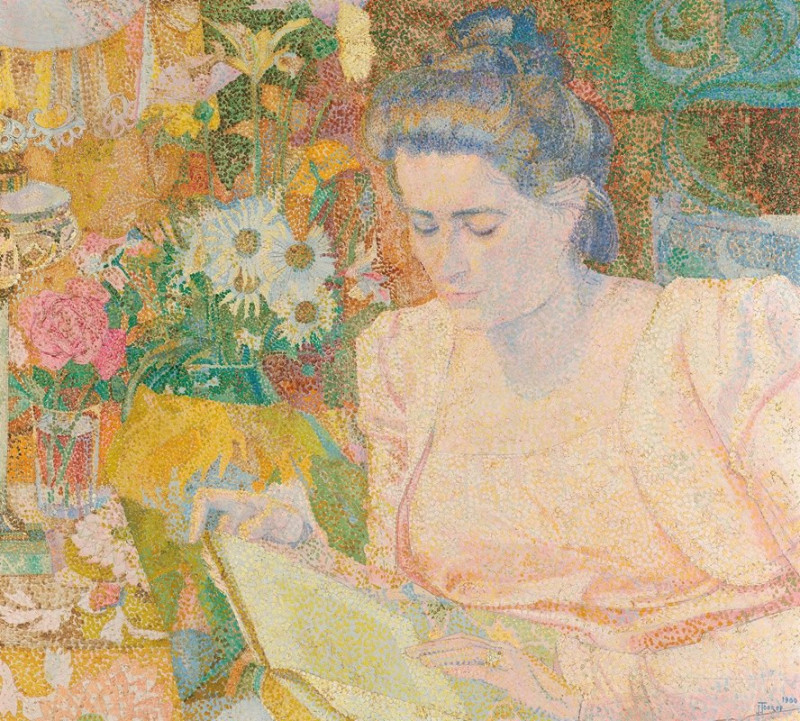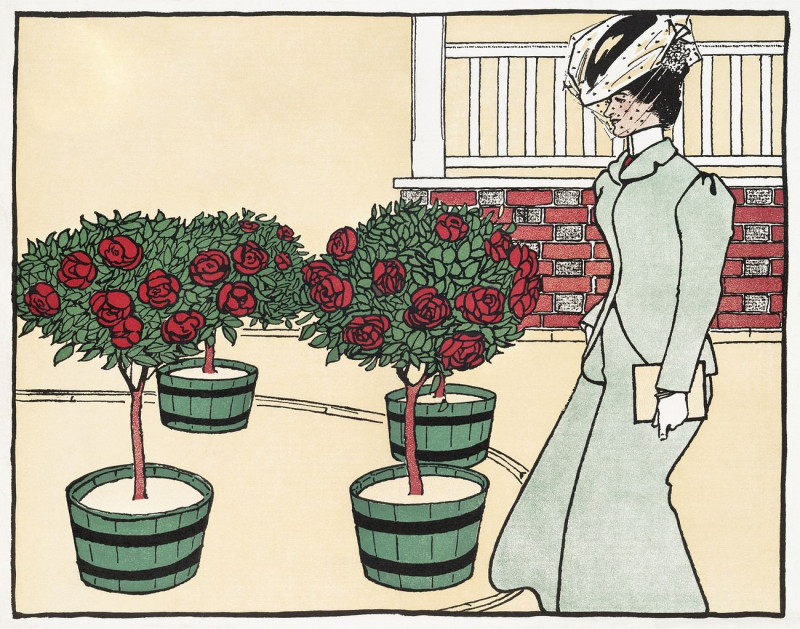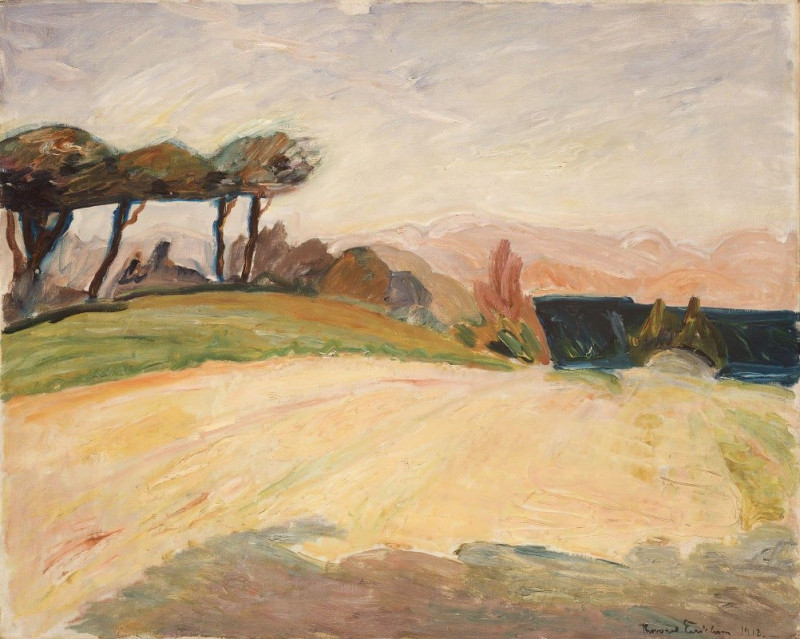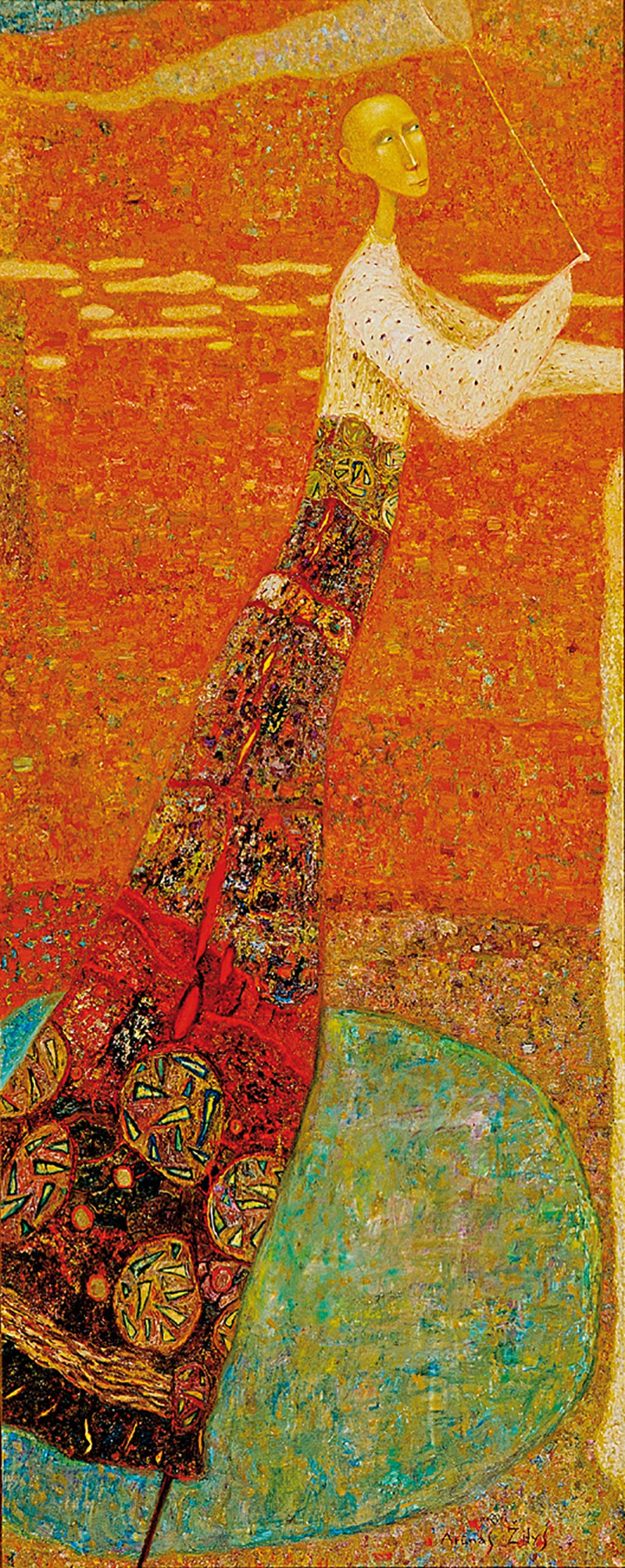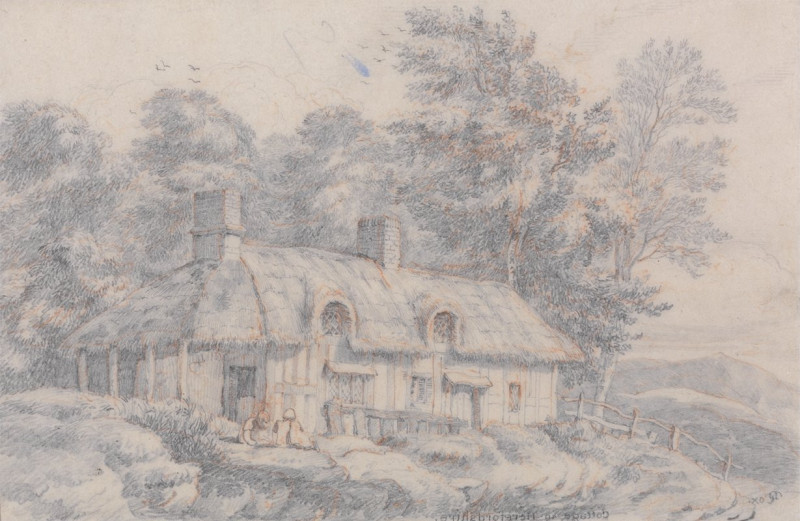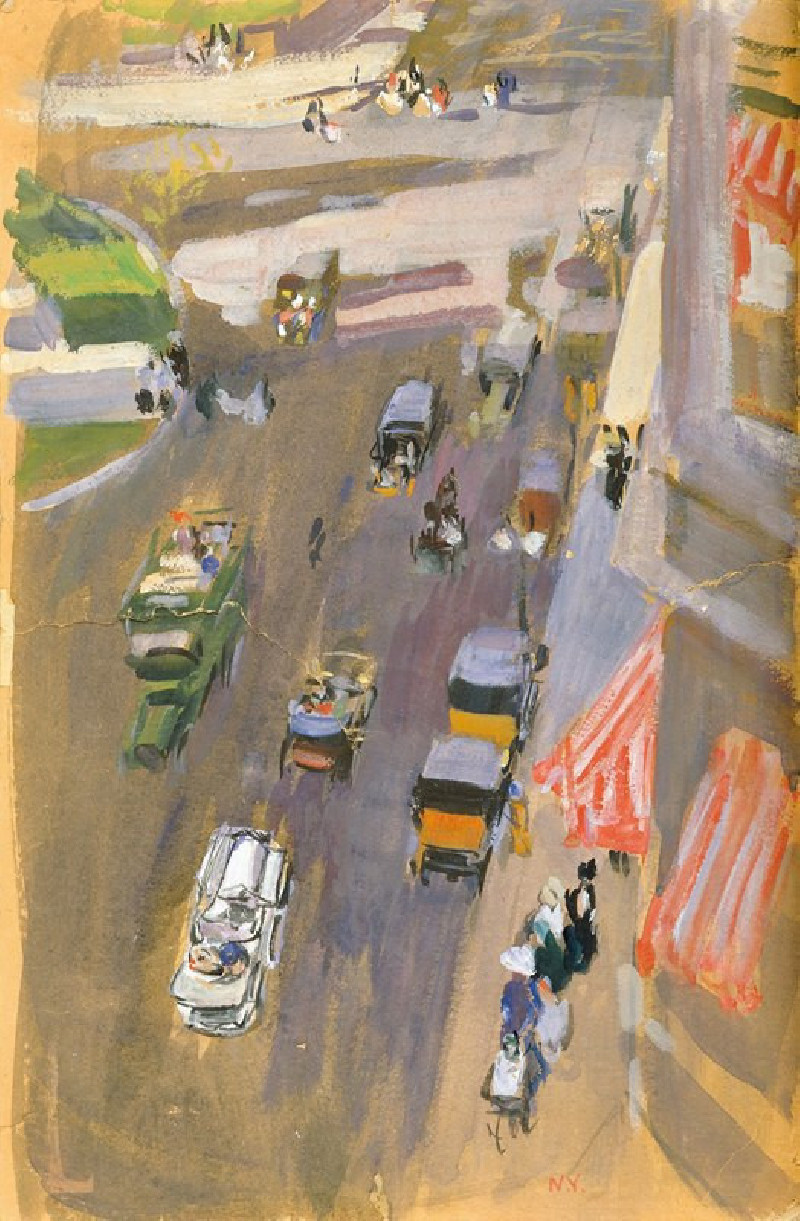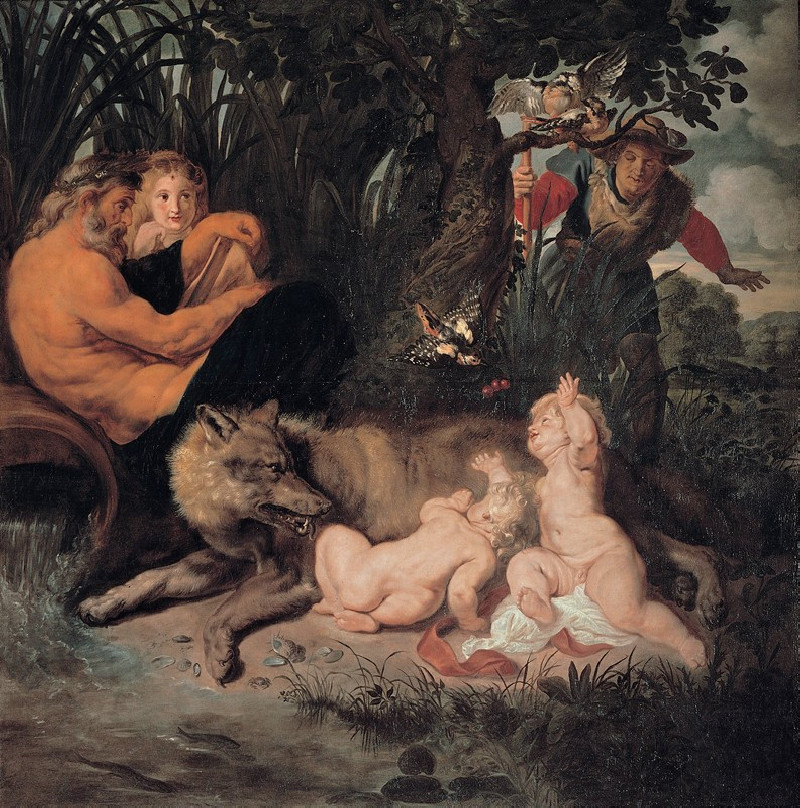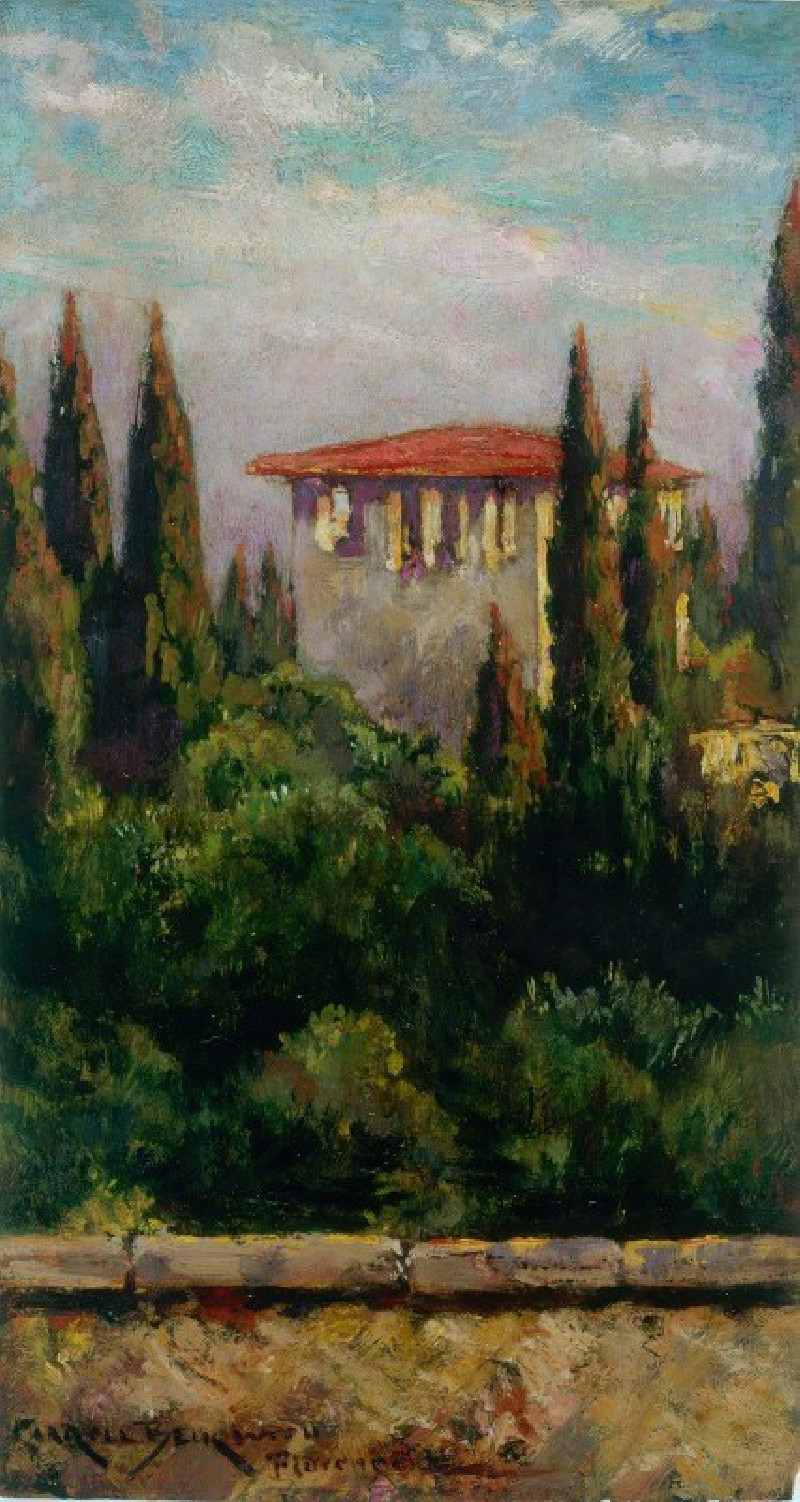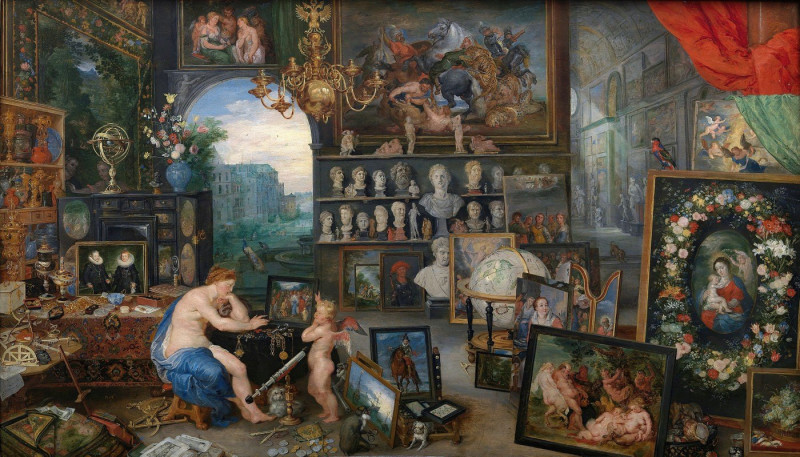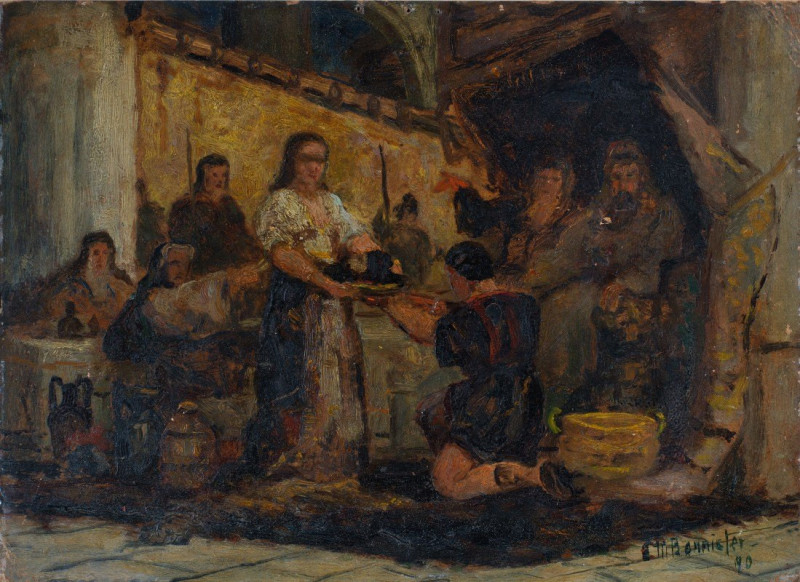Bords du Loing, Saint-Mammes (The River Loing at Saint-Mammes) (1885)
Technique: Giclée quality print
Recommended by our customers
More about this artwork
Alfred Sisley's "Bords du Loing, Saint-Mammes" (1885) captures the serene beauty of the River Loing as it graces Saint-Mammes, a picturesque village near Fontainebleau, France. This landscape painting vividly illustrates Sisley's passion for en plein air painting, a hallmark of the Impressionist movement to which he belonged.In the painting, the gentle flow of the river is mirrored by a soft, expansive sky, both of which are rendered in Sisley’s characteristic light brushstrokes and tranquil color palette. The composition is anchored by a cluster of rustic homes and outbuildings, their pale facades reflecting sunlight and casting a gentle glow. A luminous tree envelops the right side of the canvas, its lush foliage adding depth and contrast.Water, sky, and earth converge with a harmonious blend of blues, whites, and greens, creating a reflective and contemplative scene. Sisley's use of reflection on the river’s surface not only shows his technical prowess but also enhances the overall sense of peace and stillness that this scene embodies."Bords du Loing, Saint-Mammes" invites viewers to step into a moment of timeless calm, reflecting the enduring beauty of the French countryside and the enduring appeal of Impressionist landscapes.
Delivery
Returns
Alfred Sisley (1839–1899), an English impressionist artist, was renowned for his breathtaking impressionist landscape paintings. Born in 1839 to a wealthy family in Paris, Sisley spent most of his life in France. Despite being intended for a career in commerce, he rebelled and pursued his passion for painting as an amateur in the studio of Charles Gleyre, where he befriended artists Claude Monet and Pierre-Auguste Renoir. The financial loss of his family in the Franco-German War led Sisley to make a career out of his art, though it left him financially distressed. It wasn't until after his passing in 1899 that the true value of his work was recognized.



